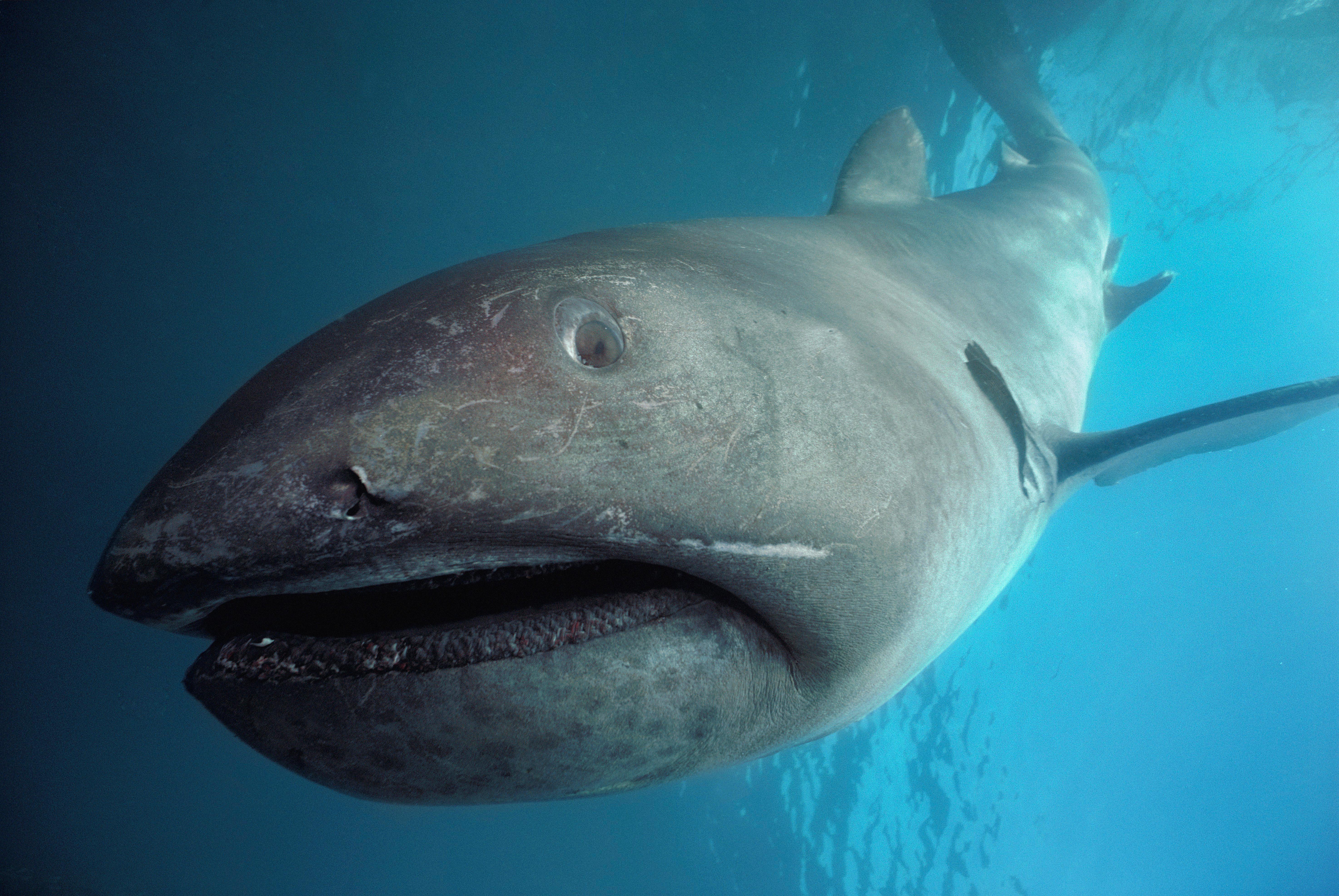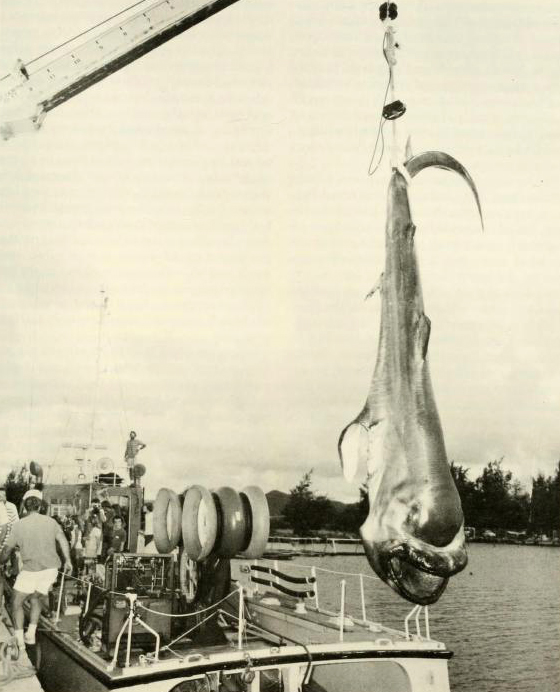Megamouth shark is one of the world’s rarest sharks. It was first discovered in 1976. Since then, few individuals have been caught or sighted. Megamouth sharks live in temperate and tropical waters of oceans worldwide. They can be found living at depths of 500 to 3,300 feet (150 to 1,000 meters).

Megamouth sharks are blackish brown with a white underside. They may grow to about 16 feet (5 meters) long. The megamouth shark has a large rounded head and enormous jaws with many small teeth. Megamouth sharks sometimes have small round scars on their bodies from the bites of cookiecutter sharks. The cookiecutter shark is a small shark that attaches to the skin of larger sharks and marine mammals.

Megamouth sharks are filter feeders. Their large mouth contains gill rakers. The gill rakers act as filters that strain the water for tiny, drifting ocean life called plankton. To feed, the shark swims slowly with its mouth gaping open. While feeding, the lips of the megamouth shark retract, revealing a broad white luminescent (giving off light) band on the upper jaw. This may function to lure prey, or it may be used as a signal to other megamouth sharks.
Scientists know little about megamouth shark behavior. Researchers studying the movements of one megamouth shark found that this shark spent the daytime hours in deep water, but rose closer to the surface at night. This suggests the shark follows the movement of plankton over the course of day and night, a type of movement called diel migration.
Researchers think that megamouth sharks may be ovoviviparous. That is, the female keeps the eggs within her body until they hatch. The young of ovoviviparous sharks are born alive.
